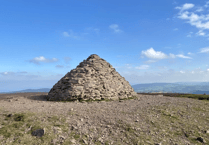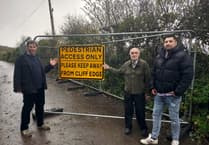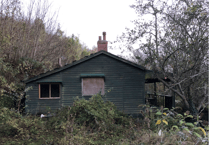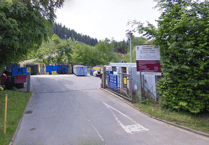CLIFF erosion and movement on the coast near Watchet has increased at several points, surveys by ecological and geological consultancy Geckoella have shown.
The news came as Somerset Council re-opened the B3191 road at Cleeve Hill on Good Friday for walkers, but not for vehicles.
The road has been closed since January of last year due to steady cliff subsidence putting it at risk of collapse.
Geckoella has since carried out a series of detailed geological and ecological surveys for the council of the cliffs and foreshore to the west of Watchet.

Its assessment of the stability of the cliffs and the geological risk in a dynamic environment affecting the South West Coast Path was the basis of the council agreeing access for walkers.
Cyclists are expected also to be allowed to use the B3191 in the next few weeks but it will remain closed to all motor vehicles, including motorbikes, on safety grounds and because of concerns about weight issues on the road and its proximity to the unstable cliff edge.
But at the same time Geckoella warned the rates of cliff erosion and movement had increased at West Street Beach and Cleeve Hill due to the impacts of climate change.
Geckoella co-director Dr Andy King said there was direct erosion from the sea at the cliff base and hydrological effects due to increased, prolonged rainfall and drainage.
Dr King said: “Using drone surveys at Cleeve Hill, Geckoella has identified five main areas that were subjected to further monitoring regarding active movement within the cliffs.

“These were monitored in the context of additional evidence provided from ground sensors and other indicators such as the mis-alignment of the roadside kerb stones.
“Ongoing monitoring work by Geckoella, following that of other engineering and geological specialists, has confirmed that the rates of cliff erosion and movement have increased at several points.”
Dr King said the striking red and blue cliffs at Watchet were an iconic landform appreciated by local residents and tourists alike.
He said from a geologist’s perspective, they were of national and international significance and Natural England recognised the coastline from Blue Anchor to Lilstock as hosting exceptional rock outcrops and designated it a Site of Special Scientific Interest.
Cliff subsidence, rock falls, and landslides were a regular and expected occurrence due to continuous tidal erosion and complex hydrological systems within the cliffs themselves.
Dr King said: “Additionally, the effects of global climate change are expected to cause sea level rise, and accelerate coastal erosion processes in the future.”
He said Geckoella was helping Somerset Council regularly assess the situation by carrying out targeted geotechnical and geological monitoring along West Cliff to improve the baseline understanding of the site.
The surveys included drone flights over the cliff/clifftop and foreshore area, geological mapping, and a preliminary ecological appraisal.
The baseline surveys would identify changes through time using aerial drone inspections, generate a comprehensive geological understanding of the site through geological mapping, and provide an up-to-date ecological understanding, including habitat mapping.




